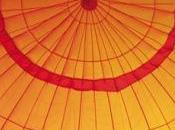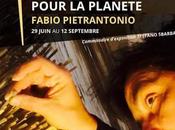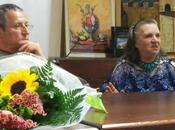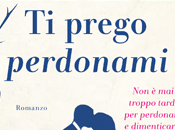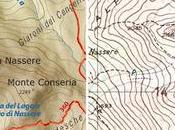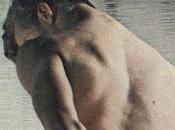Until one has loved an animal, a part of one's soul remains unawakened.
Anatole France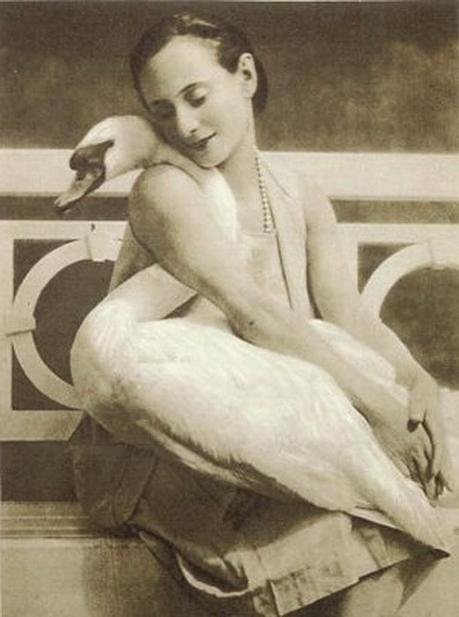
Finchè una persona ama un animale, una parte della sua anima resta sopita.
Anatole FranceEretta a simbolo stesso della nobile arte della danza classica, Anna Pavlova divenuta tra la fine del XIX e gli inizi del XX secolo celebre poichè per lei fu creato il 'quadro' della morte del cigno, e probabilmente a questo il suo nome è rimasto principalmente legato, è da considerarsi una sorta di ambasciatrice della danza stessa poichè danzando fino all'età di cinquant'anni e praticamente ovunque nel mondo portò la danza classica laddove prima di allora mai era stata e dove ancora era sconosciuta.
Era nata il 31 gennaio del 1881 a Ligovo, San Pietroburgo, da genitori non sposati: la madre lavorava come lavandaia, il padre era forse un ebreo, ma fu il secondo marito della madre colui che la adottò legalmente dandole il suo cognome.
All'età di soli otto anni risale la sua infatuazione per la danza classica, quando la madre la condusse al Teatro Imperiale Mariinskij a vedere una performance della Bella Addormentata e da allora ella decise che sarebbe stata quella la sua vita: non ammessa nella compagnia del balletto quando aveva nove anni forse per la giovane età, forse per l'aspetto un po' emaciato, venne accettata l'anno seguente; i primi anni di carriera di Anna non furono semplici poichè il suo corpo non era fatto per il balletto - aveva i piedi decisamente arcuati e gambe lunghe che terminavano con caviglie affusolate - e non aderiva inoltre agli standard del tempo che volevano la ballerina brevilinea, dal corpo piccolo e compatto.
Spesso i suoi compagni la insultavano soprannominandola 'la ginestra' e 'la petite sauvage' ( la piccolo selvaggia ), ma ella, imperterrita, al fine di migliorare e perfezionare la propria tecnica, giunse a prendere lezioni extra dai maestri del tempo quali Pavel Gerdt, Nikolai Legat, Christian Johansson ed Enrico Cecchetti.
Essendo i suoi piedi estremamente rigidi, pensò di far rinforzare la sua 'ballerine' con l'aggiunta di un pezzo di legno duro sulle suole di sostegno e curvando l'interno della scarpa, precorrendo così la forma della moderna scarpetta da ballo.
Con gli inizi del XX secolo Anna giunse ad avere una propria compagnia e, dopo aver lasciato la Russia, si trasferì a Londra stabilendosi, nel 1912, presso la Ivy House sulla North End Road, Golders Green, a nord di Hampstead Heath, dove vivrà per il resto della sua vita.
Ma è di questo che qui principalmente tengo a parlarvi: Anna aveva un trasporto particolare per gli animali, riusciva a comunicare con tutti gli animali,
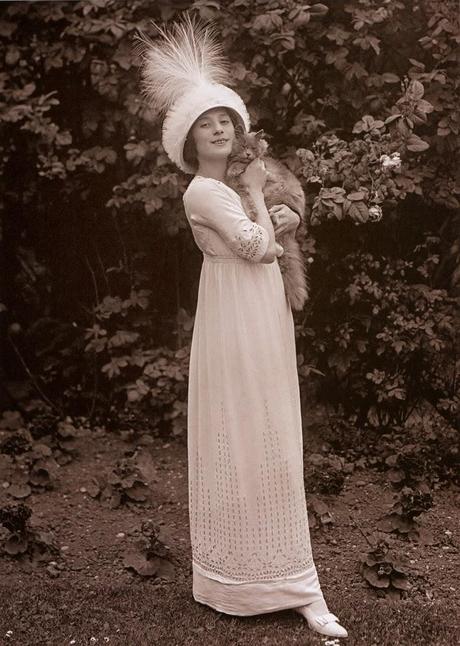
non solo con quelli considerati usualmente da compagnia, riusciva ad avvicinare e ad ammaliare anche animali poco domestici che prima di allora mai l'avevano vista, come nella fotografia qui sotto in cui è ritratta in visita al Castello di Vigoleno ( Piacenza ) con un agnello,
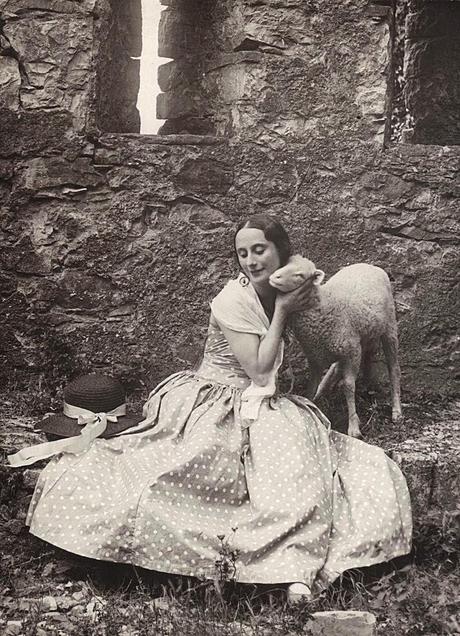
ma il suo più grande amore fu Jack, il suo incantevole e maestoso cigno:
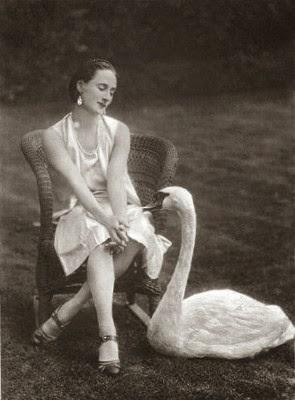
Jack viveva con lei a Londra, poichè Ivy House possedeva un grande giardino con un laghetto artificiale in cui albergavano numerosi uccelli esotici portati dai suoi viaggi all'estero, e la seguiva ovunque quasi come se di Anna si fosse innamorato .. probabilmente accadde proprio così, con ogni probabilità Jack considerava Anna una femmina di cigno e forse, le sembianze, le movenze e la grazia del cigno realmente le possedeva .. Anna e Jack erano una coppia perfetta !
Anna danzava anche come un cigno e, per questa sua particolare predilezione per i nobili e maestosi bianchi uccelli, chiese la collaborazione del coreografo Fokine proponendogli la lettura del poema di Lord Alfred Tennyson " The Dying Swan " - " La morte del cigno " .
L'inno della morte del cigno selvaggio toccò l'anima
Di quel luogo rifiuta la gioia
Nascosto nel dolore: in un primo momento per l'orecchio
Il trillo era lieve, e pieno e chiaro;
E fluttuante nelle sfere più basse del cielo,
Prevaleva in debolezza, un canto funebre rubato
Talvolta lontano, talvolta vicino
Ma subito la voce si fece terribile ed esultante,
Con una musica strana e molteplice,
Fluì lontano in un canto libero e audace;
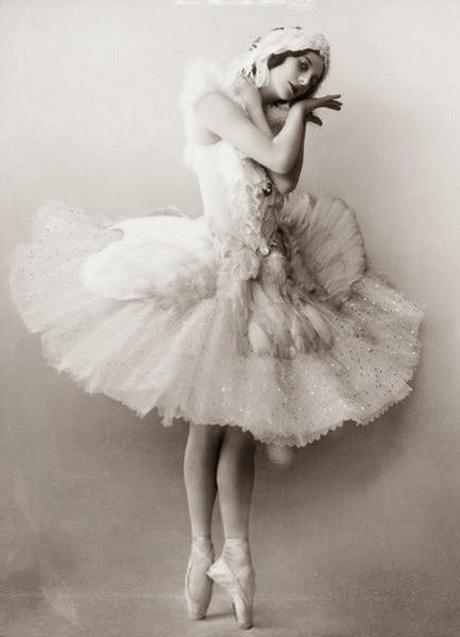 Anna Pavlova ne 'The Dying Swan'
Anna Pavlova ne 'The Dying Swan'
Come quando un potente popolo gioisceCon la ciaramelle, e con cembali, ed arpe d'oro,E il tumulto della sua fama risuonaPassando attraverso i cancelli aperti della città lontana,Fino a raggiungere il pastore che osserva la stella della sera.E gli striscianti muschi e le erbe selvagge che si arrampicano,Ed i rami del salice roridi ed imbiancati dalla brina,Ed il crescente ondeggiare del sospiro delle canne,E la risacca cha fa eco sulla rivaE gli argentei fiori di marzo che affollanoLe insenature desolate e gli specchi d'acqua,Sono stati inondati dai turbini del canto.
Egli le suggerì la scelta più ovvia che da tale lettura poteva scaturire, ovvero una coreografia appositamente creata per lei sulle note del violoncello del Le cygne da Il carnevale degli animali del compositore francese Camille Saint - Saëns, scritto nel 1886, in una danza che la Pavlova dal 1905 eseguì con passione per circa 4000 volte durante gli ultimi 25 anni della sua brillante carriera.
Alla figura ed all'immagine del cigno ella era molto legata, per i cigni aveva una predilezione quasi maniacale ed il suo Jack le consentiva di mantenere vivo questo legame anche nella vita di tutti i giorni; pensate che in occasione della produzione di un documentario a cui Anna Pavlova era stata chiamata a partecipare insieme con altre celebrità, ciascuna con il proprio animale domestico da compagnia, ella presenziò proprio con il suo amato Jack;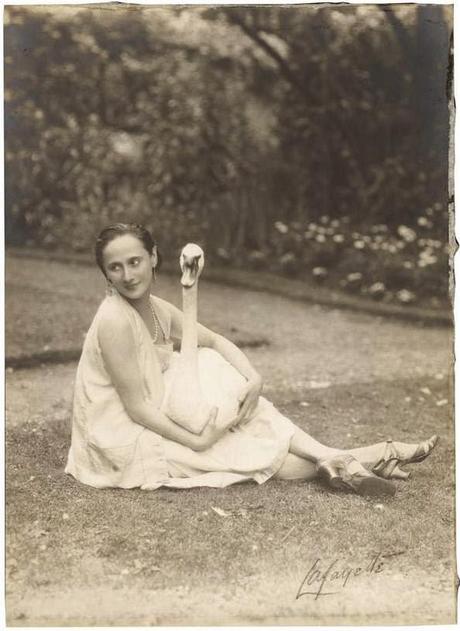
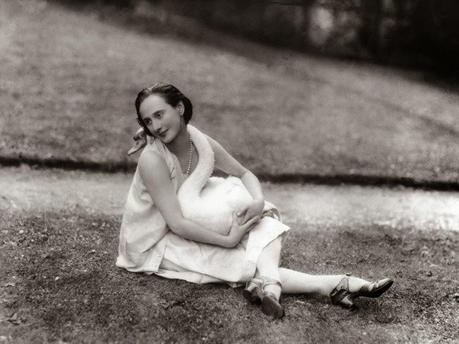
il mondo animale è un mondo di meraviglie e fortunato chi di queste meraviglie può essere parte.
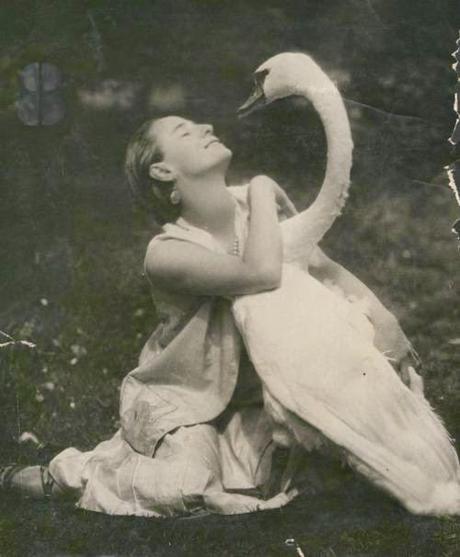
Nella pacatezza dello sguardo degli animali parla ancora la saggezza della natura; perché in essi la volontà e l'intelletto non si sono ancora distaccati abbastanza l'uno dall'altro per potersi, al loro reincontrarsi, stupirsi l'uno dell'altra.
Arthur Schopenhauer
Anna Pavlova morirà ancora giovane, tre settimane circa prima del suo cinquantesimo compleanno di conseguenza ad un attacco di pleurite che la colpirà mentre si trovava all'Aia in occasione di uno spettacolo; negli ultimi istanti della sua vita chiese che le venisse porto il costume di scena per la morte del cigno ed impugnatolo disse :
“ Play the last measure very softly / Assumi l'ultima posa molto dolcemente ”;le sue ceneri furono portate a Londra dove sono tutt'ora custodite.
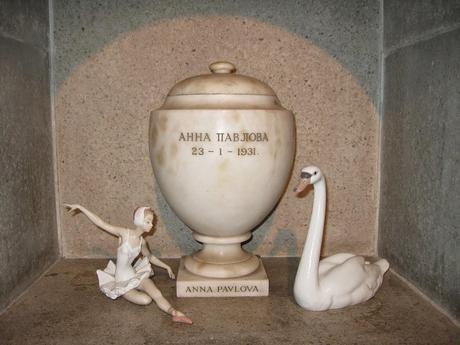
Come sempre vi ringrazio di cuore per l'affetto che mi dimostrate.
A presto ♥
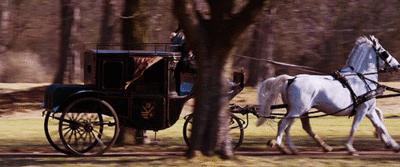

Fonti bibliografiche:
Barbara Allman, Dance of the Swan: A Story about Anna Pavlova, Lerner Classroom ( Reprint edition ), 2001
Margaret Fonteyn, (Anna) Pavlova: Portrait of a Dancer, Viking edition, 1984
Jane Pritchard, Caroline Hamilton, Anna Pavlova: Twentieth Century Ballerina, Booth-Clibborn, 2013
The Works Of Alfred Lord Tennyson Copyright 1893 London: Macmillan And Co. Toronto: The Copp Clark Co. Limited.

Until one has loved an animal, a part of one's soul remains unawakened.
Anatole France
- picture 1
Erected as the symbol same of the noble art of ballet, Anna Pavlova became in the late XIXth and early XXth century famous because for her it was created the ' role ' of the death of the swan, and probably at it her name has remained primarily bound, she's considered to be a sort of ambassador of the dance itself for she danced until the age of fifty and actually she brought the ballet everywhere in the world ehere before it was never been and where it was still unknown.
She was born on January 31st, 1881 in Ligovo, St. Petersburg, to unmarried parents : her mother worked as a laundress, her father was possibly a jew, but it was her mother's second husband to give her his surname legally adopting her.
At the age of only eight dates back her infatuation for the ballet, when her mother took her to the Imperial Mariinsky Theatre to see a performance of the Sleeping Beauty, and since then she decided it would be that her life: not admitted into the company of the ballet when she was nine, perhaps for the too young age, perhaps for her look a bit emaciated, she was accepted the following year; the early career of Anna wasn't far too easy because her body wasn't made for the ballet - her feet were definitely arched and her long legs ended with tapered ankles - and also didn't adhere to the standards of that time which wanted a dancer to be brevilineo with a small and compact body.
Often nicknamed 'broom' and 'la petite sauvage' ( the little wild ) by the other litlle dancers, she, undeterred, in order to improve and perfect her technique, took extra lessons from the masters of the time such as Pavel Gerdt, Nikolai Legat, Christian Johansson and Enrico Cecchetti.
For her feet were extremely rigid, she thought to reinforce her point shoe with the addition of a piece of hard wood on the soles for support and curving the inside of the shoe, thus anticipating the modern form of the dance shoe.
With the beginning of the XXth century Anna came to have a company on her own and, after leaving Russia, she moved to London and settled in 1912 at Ivy House, North End Road, Golders Green, at north of Hampstead Heath, where she lived for the rest of her life.
But it's this what I mainly want to tell you about here: Anna had a particular transport for animals, she could communicate with all animals,
- picture 2
not only with those usually considered pets, she was able to enchant even those animals considered less domestic which had never seen her before, as in the photo below where she's portrayed on a visit to the Castle of Vigoleno (Piacenza) with a little lamb,
- picture 3
but her greatest love was Jack, her enchanting and majestic swan:
- picture 4
Jack lived with her in London, as Ivy House had a large garden with an artificial lake in which harbored several exotic birds brought back from her travels abroad, and followed her everywhere almost as if with he Anna had fallen in love .. probably it happened just so, in all probability Jack considered Anna a female swan and perhaps the appearance, the movements and the grace of the swan she really possessed .. Anna and Jack were a perfect pair !
Anna also danced like a swan, and for this particular predilection for the noble and majestic white birds of hers, she asked the help of the choreographer Fokine suggesting him the reading of the poem by Lord Alfred Tennyson " The Dying Swan ".
The wild swan's death-hymn took the soulOf that waste place with joyHidden in sorrow: at first to the earThe warble was low, and full and clear;And floating about the under-sky,Prevailing in weakness, the coronach stoleSometimes afar, and sometimes anear;But anon her awful jubilant voice,With a music strange and manifold,Flow'd forth on a carol free and bold;
- picture 5
As when a mighty people rejoiceWith shawms, and with cymbals, and harps of gold,And the tumult of their acclaim is roll'dThro' the open gates of the city afar,To the shepherd who watcheth the evening star.And the creeping mosses and clambering weeds,And the willow-branches hoar and dank,And the wavy swell of the soughing reeds,And the wave-worn horns of the echoing bank,And the silvery marish-flowers that throngThe desolate creeks and pools among,Were flooded over with eddying song.
The obvious choice that could arise from such a reading, was a choreography specially created for her on the notes of the cello in Le Cygne from The Carnival of the Animals by the French composer Camille Saint - Saëns, written in 1886, in a dance that Pavlova performed with passion since 1905 for about 4000 times during the last 25 years of her brilliant career.
She was very tyed to the figure and the image of the swan and for swans had an almost maniacal fondness and her Jack allowed her to keep alive this link also in her everyday life; yiu have to know that during the production of a documentary in which Anna Pavlova was asked to take part along with other celebrities, each one with his own companion pet, she just attended with her beloved Jack;
- picture 6 - Anna and Jack in the garden of Ivy House in the twenties
these are amazing pictures that witness how the sensitivity of a kind soul is also felt by the animals less known as pets, but not less loving, following, in all likelihood, processes and phenomena transcending any scientific explanation ...
- picture 7
the animal world is a world of wonders and lucky is who can be part of these wonders.
- picture 8
In the calm of the eyes of the animals still speaks the wisdom of nature; because in them the will and the intellect aren't detached enough yet one from each other to be able, when they meet again, to surprise each other
Arthur Schopenhauer
Anna Pavlova died still young, about three weeks before her fiftieth birthday as a result of an attack of pleurisy that hit her while she was in Aja in the occasion of a show; in the last moments of her life she asked for the costume for the Dying Swan and took it she said:
"Play the last measure very softly ";
her ashes were brought to London where they are still kept.
- picture 9
I let you to judge whether this is a sad or rather a deeply touching story of an indescribable tenderness, the story of a bond that goes beyond any attempt at verbalization, the story, why not, of a great love.
As usual, I thank you with all my heart for the love you always show me.
See you soon ♥
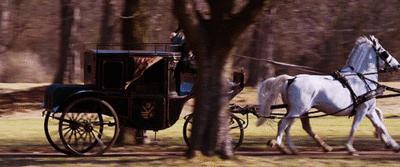

Bibliographic sources:
Barbara Allman, Dance of the Swan: A Story about Anna Pavlova, Lerner Classroom ( Reprint edition ), 2001
Margaret Fonteyn, (Anna) Pavlova: Portrait of a Dancer, Viking edition, 1984Jane Pritchard, Caroline Hamilton, Anna Pavlova: Twentieth Century Ballerina, Booth-Clibborn, 2013The Works Of Alfred Lord Tennyson Copyright 1893 London: Macmillan And Co. Toronto: The Copp Clark Co. Limited.